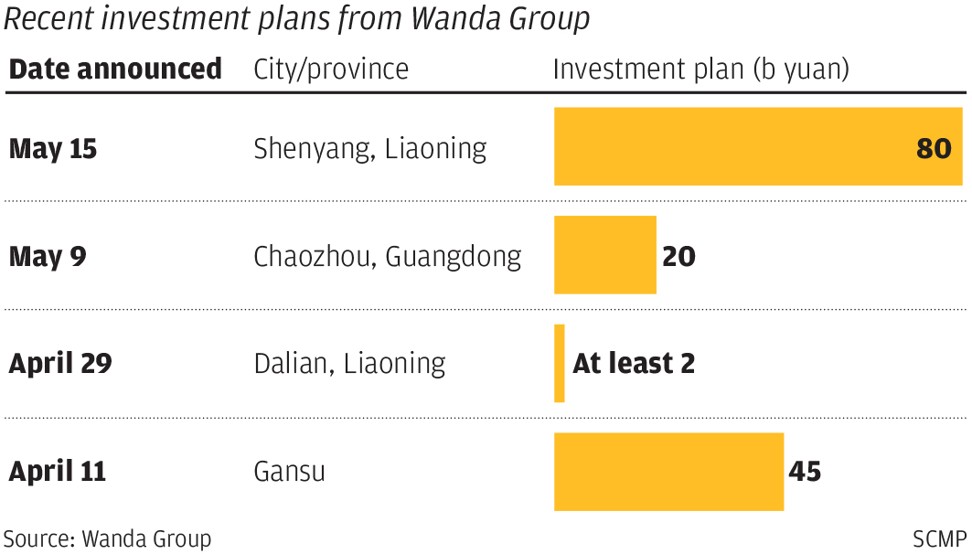
Dalian Wanda, halfway through its debt-shedding exercise, is spending US$21 billion in a month buying real estate projects
- Although Wanda’s commitment in the past one month stands at 147 billion yuan, the company’s actual investment will be much smaller as it expects the local governments to pick up most of the tab, says an analyst
Tycoon Wang Jianlin’s property-to-entertainment conglomerate, which unveiled an 80 billion yuan project in Shenyang said its “world-class” cultural tourism project will comprise an international hospital, an international school and five Wanda Plazas – the group’s flagship shopping centre brand – in the capital of the rust-belt Liaoning province. The group had previously invested 25 billion yuan in the city.
Wang said the cooperation with the local government only took a month from the initial negotiation to signing the deal.
“Both parties have agreed that construction will start in the third quarter. This is the Shenyang speed,” Wang said at a signing ceremony.

The latest investment takes Wanda’s commitment to 147 billion yuan in just over a month, including 20 billion yuan in Chaozhou, Guangdong province, and 45 billion yuan in the impoverished north-central province of Gansu.
In places such as Gansu that are typically shunned by large Chinese firms, Wang has promised to build huge cultural theme parks, hotels, shopping centres, hospitals and sports stadiums that could revitalise the local economy and boost employment.
Wanda’s shift back towards the home market comes after it went through a massive slimming exercise since it was placed on a watch list by Chinese regulators in June 2017 for highly leveraged acquisitions around the world. Its balance sheet, as of March, had shrunk by more than US$25 billion from end 2016, or more than 20 per cent.
Having dumped US$25 billion in assets, Wanda still about halfway through cutting its debt burden
The ambitious investment plan, however, raises questions about Wang’s strategy, especially the commercial viability of these projects that require upfront investment, and how the company plans to finance it.
Wanda did not reply to the Post’s inquiry on how it plans to fund these projects. Late last year the company made a 52 billion yuan commitment to invest in three projects announced in Zunyi, Lanzhou and Yanan. The company has not reported progress on these projects or how leveraged these investment will be.

David Hong, the Hong Kong head of research at the consultancy CRIC, said the actual money Wanda will spend will be much smaller than the headline number, given the likely involvement of local governments and the time taken to complete these projects.
“Wanda’s business strategy is to help solve local governments’ headaches, like employment and economic growth, in exchange for cheap land or other favours not seen in the official package,” he said, adding that it was difficult to comment on specifics as Wanda gave little details of those deals.
One example is the Oriental Movie Metropolis, a US$7.9 billion, five-year undertaking by Wanda, promised the Qingdao government huge local employment and a replica of Hollywood. In exchange the local government granted the company cheap land on which it built residential units, reaping billions of yuan in profit from their sale.
Hong said Wanda’s strength lies in undertaking projects in such economically poor regions. Most of the 280 Wanda Plazas are located in China’s lower-tier cities, where it enjoys a higher brand recognition.


